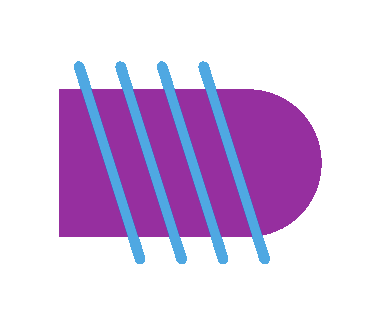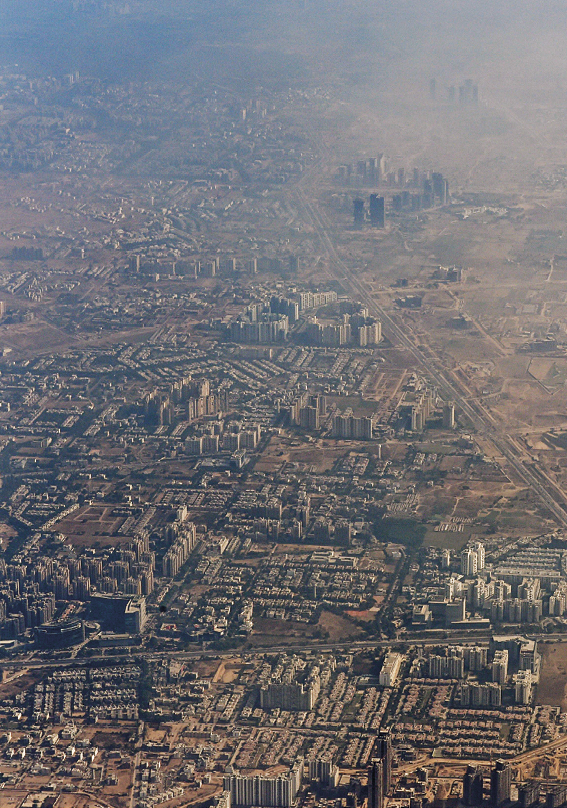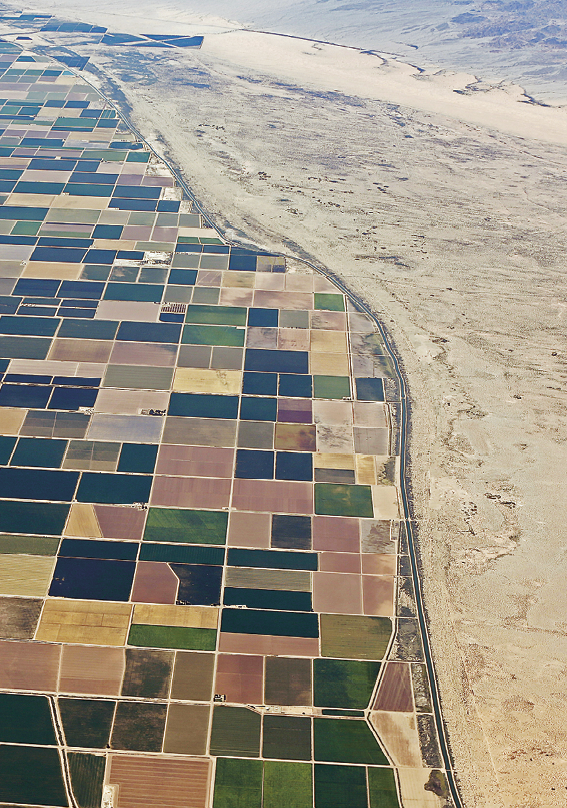
âpendices

dere is móre
UNIt 1 – Faça no caderno as questões de resposta escrita.
- Complete com a alternativa correta.
“Exercise should be a espaço para resposta (regular/regularity) part of your day, like brushing your teeth, eating, and sleeping.”
b.
“A good mental attitude is important. Find an espaço para resposta (active/activity) that you think is fun.”
c.
“Do the activity as often as espaço para resposta (possible/possibility), but don’t exercise to the point of pain.”
AMERICAN Academy of Pediatrics. Get Fit, Stay Healthy. AAP: Itasca, 2006.
d.
“Up to 5 million deaths a year could be averted if the global population was more espaço para resposta (active/activity).”
e.
“Regular physical activity is proven to help espaço para resposta (prevent/preventable) and manage non-communicable diseases such as heart disease, stroke, diabetes, and several cancers.
f.
walking, cycling and other forms of active non-motorized forms of transport are espaço para resposta (access/accessible) and safe for all
WORLD Health Organization. Physical Activity, 26 novembro 2020. Disponível em: https://oeds.link/aR0tFm. Acesso em: 9 maio 2022.
- Reformule as frases usando mãsti ou mâst nót.
- .
You espaço para resposta drink sugary drinks.
b.
You espaço para resposta eat nuts and seeds regularly.
c.
You espaço para resposta eat ultra-processed foods.
d.
You espaço para resposta eat fish.
e.
You espaço para resposta get enough sleep.
UNIt 2 – Faça no caderno as questões de resposta escrita.

1. Leia o título e a parte inicial do seguinte artigo de opinião e responda às perguntas.
March 16, 2018
Diversity in education should be a requirement
BY JORDYNE WATFORD Board of Contributors
When Nelson Mandela stated in his speech, “Education is the most powerful weapon for changing the world,” he spoke a most valuable truth for our time. Education is something that shouldn’t be taken for granted, especially in America, which has the potential to shape brilliant minds.
But when those brilliant minds aren’t being properly taught, funded or represented, how are they supposed to prepare themselves for the diverse future ahead?
Recently, The Evergreen State College announced the cancellation of its yearly Day of Absence. The Day of Absence was an event where students would learn about the importance of diversity and value of others despite differences. Students and teachers of color left campus for the day and white students stayed. The next day, it would be the Day of Presence, when they’d return and both groups would speak about the importance of diversity.
WATFORD, J. Diversity in education should be a requirement. The Olympian, Olympia, 16 março 2018.
- Em sua opinião, que assunto será discutido no texto completo? Que posição em relação ao assunto será defendida?
- Quais são os objetivos dessa parte inicial do texto?
- Apresentar o tópico que será discutido.
- Indicar que posição será adotada em relação ao tópico.
- Desenvolver argumentos para sustentar a posição adotada.
- Concluir com a retomada e a sistematização dos argumentos apresentados.
- Onde acontecia e qual era o objetivo do “dêi óv ébsens”?
- O que acontecia naquele dia?
e. O que você espera encontrar na próxima parte do texto? Por quê?

2. Leia o final do texto que você começou a ler na questão anterior e responda.
Personally, I’m still learning about diversity myself, how to familiarize myself with dissimilar cultures, especially when teaching and studying outside the U.S. But at least I’m learning. How about you?
JORDYNE WATFORD FORMERLY TAUGHT IN THE OLYMPIA SCHOOL SYSTEM AND IS WORKING TO EARN A MASTER’S DEGREE IN ENGLISH.
WATFORD, J. Diversity in education should be a requirement. The Olympian, Olympia, 16 março 2018.
- Qual é o propósito dessa parte do texto?
- Por que o texto termina com uma pergunta?
- Qual é o objetivo de textos argumentativos?
- Dar instruções.
- Descrever eventos.
- Narrar uma história.
- Persuadir os leitores.

3. Escreva frases que apontem as obrigações de pais, alunos, professores, escolas e governos de garantir a qualidade da educação. Lembre-se de usar mãsti ou .
UNIt 3 – Faça no caderno as questões de resposta escrita.

- Relacione as imagens às suas legendas.

II.

III.

- ”.
- “”.
c. “
SIM, D. World Environment Day 2015: 21 aerial photos show humanity’s impact on Earth. International Business Times, 30 dezembro 2015. Disponível em: https://oeds.link/V2qIeq. Acesso em: 9 maio 2022.

- Escreva V (verdadeiro) ou F (falso) para cada afirmação sobre as legendas que apareceram na questão anterior.

3. Leia esse fragmento de um famoso discurso de Mártin Lúter King , Júnior e encontre no texto trechos que possuem significado semelhante ao das frases a seguir.
Martin Luther King, Júnior (1929-1968, United States)
I Have a Dream
Washington, D.C., August 28, 1963
Five score years ago, a great American, in whose symbolic shadow we stand today, signed the Emancipation Proclamation. This momentous decree came as a great beacon of light of hope to millions of Negro slaves who had been seared in the flames of withering injustice. It came as a joyous daybreak to end the long night of their captivity.
But one hundred years later, the Negro still is not free. One hundred years later, the life of the Negro is still sadly crippled by the manacles of segregation and the chains of discrimination. One hundred years later, the Negro lives on a lonely island of poverty in the midst of a vast ocean of material prosperity. One hundred years later, the Negro is still languished in the corners of American society and finds himself an exile in his own land. So we have come here today to dramatize a shameful condition.
In a sense we have come to our nation’s capital to cash a check. When the architects of our republic wrote the magnificent words of the Constitution and the Declaration of Independence, they were signing a promissory note to which every American was to fall heir. This note was a promise that all men, yes, black men as well as white men, would be granted the unalienable rights of life, liberty, and the pursuit of happiness.
ASANTE, M. K.; ABARRY, A. S. African Intellectual Heritage: A Book of Sources. Philadelphia: Temple University Press, 1996. página 674.
d.
UNIt 4 – Faça no caderno as questões de resposta escrita.

1. Ouça este fragmento de entrevista de 2015 com o ator e entusiasta da ciência Alan Alda, anote e responda às perguntas.
Interview about science
Título: SC15: Science Advocate and Emmy Award Winning Actor Alan Alda to Open SC15
Data: 12/11/2015
Fonte: Supersized Science Podcast
SC15: Science Advocate and Emmy Award Winning Actor Alan Alda to Open SC15. 2015. 1 vídeo (11 minutos 49 Sul). Publicado pelo canal Supersized Science Podcast. Disponível em: https://oeds.link/1EYj0y. Acesso em: 12 maio 2022.
Clique no play e acompanhe a reprodução do Áudio.
- Em qual evento Alan iria falar? Qual é a sua principal preocupação com a ciência? O que ele fez para alcançar seus objetivos dentro da comunidade científica?
- O que Alan Alda pensa da supercomputação? Como ele sustenta seu ponto de vista?
2. Complete os fragmentos de resenhas com os conectores do quadro.
becausein sum similarly yet
a.
the Derby Silk Mill, once the Derby Industrial Museum, last year became the Museum of Making. espaço para resposta, the Museum of East Anglian Life in Stowmarket, Essex, is soon to become the National Museum of Food.”
b.
they sent camera crews to Chernobyl to document the clear-up operation. Believing they would rapidly contain the catastrophe; officials ordered these crews to capture the heroic efforts of the Soviet people. espaço para resposta the clean-up went on for years.”
APPLEYARD, B. Can museums shape the future without forgetting the past? The Times, 27 fevereiro 2022.
c.
“Those who did watch the programme will understand. espaço para resposta it’s unlikely there’ll be a TV moment this week more moving than the one that came at the start of the programme.”
JACKSON, J. Kate Garraway: Caring for Derek review — a startlingly honest look at the realities of care. The Times, 23 fevereiro2022.
d.
“Darwish’s capacious vision affirms the plight of his people but is never confined by it. espaço para resposta, he speaks for Palestinians even as he speaks for himself.”
BLANKINSHIP, K. Najwan Darwish’s Poems Turn Self-Doubt into Inner Resolve in “Exhausted on the Cross”. Words Without Borders, 13 abril2021. Disponível em: https://oeds.link/WvhI5s. Acesso em: 10 maio 2022.

3. Agora reescreva os fragmentos da questão 2, substituindo os conectores utilizados por outros que mantenham o sentido das frases.

- Combine as orações de cada coluna usando dét, dét ísou sou dét.
UNIt 5 – Faça no caderno as questões de resposta escrita.

1. Ouça esse comentário sobre a internet e faça o solicitado.
Podcast commentary on the Internet
Título: Is It Futile To Draw Borders On The Internet?
Data: 19/4/2016
Fonte: Techdirt
IS It Futile To Draw Borders On The Internet?. 2016. 1 vídeo (34 minutos 22 Sul). Publicado pelo canal Techdirt. Disponível em: https://oeds.link/RQOGgp. Acesso em: 12 maio 2022.
Clique no play e acompanhe a reprodução do Áudio.
- Qual é a atitude do orador em relação ao tópico que está sendo discutido?
b. Identifique um fato e uma opinião manifestados no áudio.

2. Complete o fragmento de postagem com as palavras do quadro.
as however if or such as while

WHAT ARE THE PROS AND CONS OF VIDEO GAMES?
Video games have become one of the world’s favorite pastimes. There are almost 3 billion gamers worldwide in 2021, with gaming prevalence continuing to grow every year.
Gaming is not without controversy, though. Critics of video games will stress that the cons of video games outweigh the pros, (um) espaço para resposta those who support video games will say the opposite.
Objectively, there can be positive effects of video games when played in moderation. (dois) espaço para resposta, there can also be negative effects when played excessively.
[The] pros of video games might help you with tasks that you do every day, but they might also be applicable for jobs where you require a great deal of attention and concentration, (três) espaço para resposta working[(quatro) espaço para resposta a surgeon, driver, (cinco) espaço para resposta programmer.
On the surface, these pros of video games look appealing. Still, it’s important to remember that these positive effects of video games come with a catch: they can be far outweighed by the cons (seis) espaço para resposta gaming becomes an addiction.
ADAIR, C. What are the Pros and Cons of Video Games? Game Quitters, [sem data].Disponível em: https://oeds.link/9z3TWC. Acesso em: 9 maio 2022.
- Escreva frases ou parágrafos curtos em inglês sobre o que você faria se fosse cada um ou uma dos seguintes profissionais. Lembre-se de usar íf e uúd em suas respostas.
- .
UNIt 6 – Faça no caderno as questões de resposta escrita.
- Releia a entrevista da tésqui tchu (rídin) (página 126-127) e escreva quatro frases expressando alguns dos conselhos ali contidos. Lembre-se de usar o modal xuldi .
- Complete essas dicas para escrever um CV com os verbos modais apropriados.

HOW TO WRITE A CV – A GUIDE
Tips on how to write a good CV:
Length. Ensure your CV is no more than two pages long.
Layout. Put your name at the top and make it larger, centralized and bold. Next (um) espaço para resposta (might/should) come your email address and contact number.
Personal statement. Write a brief personal statement directly under your contact details. Make sure it’s no more than five sentences long and (dois) espaço para resposta (may/should) cover who you are, what you can bring to the table and your career aims.
Employment history. List your most recent role first and, in terms of layout, list your job title and company of employment in bold, with dates of employment in brackets. Include any key points that (três) espaço para resposta (may/should) resonate with the prospective employer.
Education. Include qualification, subject, grade, institution and date. Embellishing your grades is fraud and you[ (quatro) espaço para resposta (might/should) get caught out.
HOW to write a CV – a Guide. The Guardian Jobs, 13 setembro 2019. Disponível em: https://oeds.link/SSXj3D. Acesso em: 10 maio 2022.
3. Releia as dicas do texto da questão 2 e escreva três frases contendo conselhos acerca do que não se deve fazer ao elaborar um CV. Lembre-se de usar o modal xuldi na negativa.
- Procure no texto da questão 4 palavras ou expressões que pertençam às seguintes categorias.
- .
- .
- eduqueichion.
- Complete as frases com o conector apropriado.
- () espaço para resposta .
- (sou/huáiol) espaço para resposta .
- , espaço para resposta (bicós/rrauévâr) .
UNIt 7 – Faça no caderno as questões de resposta escrita.

1. Leia o fragmento de popi-saienci articol e, em seguida, use as preposições do quadro para completá-lo.
for from in into of (duas vezes) over to

It’s taken thousands of years, but Western science is finally catching up to Traditional Knowledge
February 15, 2018 7:04 p.m. EST
George Nicholas
Professor of Archaeology, Simon Fraser University
Traditional Knowledge has today become a highly valued source (um) espaço para resposta [information (dois) espaço para resposta archaeologists, ecologists, biologists, ethnobotanists, climatologists and others. This information ranges (três) espaço para resposta medicinal properties of plants and insights (quatro) espaço para resposta the value of biological diversity (cinco) espaço para resposta caribou migration patterns and the effects (seis) espaço para resposta intentional burning of the landscape to manage particular resources. For example, some climatology studies have incorporated Qaujimajatuqangit (Inuit traditional knowledge) to explain changes (sete) espaço para resposta sea ice conditions observed (oito) espaço para resposta many generations.
NICHOLAS, G. It’s taken thousands of years, but Western science is finally catching up to Traditional Knowledge. The Conversation, 15 fevereiro 2018. Disponível em: https://oeds.link/iJBHQF. Acesso em: 10 maio 2022.

- Encontre no texto o que é pedido.
- Palavras que designam profissionais de diferentes áreas científicas.
- Expressões que designam informações relevantes para as diversas áreas da ciência.
- Uma expressão que designa uma área científica específica.

3. Complete os fragmentos com a fórma adequada dos verbos no quadro.
determine study trade
a.
“Over the past 150 years, archaeologists have developed effective methods and techniques for espaço para resposta the past.”
b.
“There are a variety of techniques for espaço para resposta the age of an artifact or archaeological site.”
c.
“The type of material the artifact is made of can inform whether past people obtained the materials locally or by espaço para resposta with another group.”
WHAT do Archaeologists do? Society for American Archaeology. Disponível em: https://oeds.link/LdZ6gq. Acesso em: 10 maio 2022.

4. Complete com os verbos entre parênteses no tempo verbal apropriado.

“Archaeologists (um) espaço para resposta (use) different methods to find sites – surveying the ground, using satellites, or sometimes by accident! An observant beach walker (dois) espaço para resposta (discover) the prehistoric burials at Low Hauxley on the coast of England. Construction workers (três) espaço para resposta (discover) a burial ground with remains of more than 400 17th and 18th-century Africans during construction in New York City. The African Burial Ground (quatro) espaço para resposta (be) now a National Monument because of its significance in American history.”
WHAT do Archaeologists do? Society for American Archaeology. Disponível em: https://oeds.link/LdZ6gq. Acesso em: 10 maio 2022.
UNIt 8 – Faça no caderno as questões de resposta escrita.

1. Ouça este debate oral e faça o solicitado.
Oral debate - Parts um, dois and três
Título: The Languages Wars
Data: 18/07/2010
Fonte: We the People, NDTV
WE the People. Nova Delhi: NDTV, 18 julho 2010.
Clique no play e acompanhe a reprodução do Áudio.
Clique no play e acompanhe a reprodução do Áudio.
Clique no play e acompanhe a reprodução do Áudio.
- Verifique se as seguintes afirmações são V (verdadeiras) ou F (falsas) de acordo com o debate oral.
- A língua não é uma questão controversa na Índia.
- Os indianos de determinada classe têm orgulho de falar inglês.
- O formato da proposta anterior para as escolas era “duas línguas”.
- A população da Índia, na época do debate, era de cêrca de um bilhão de pessoas.
- A nova geração de indianos corre o risco de perder o contato com sua língua materna.
- O que significa a expressão “killer language”? Que elementos do texto possibilitam chegar a essa definição?
- De acordo com o áudio, que dificuldade Mark Tully enfrenta ao aprender hindi?
- Na opinião de Mark, qual idioma é mais importante para a comunicação entre diferentes grupos na Índia?
- Bengali
- Inglês
- Hindi
- Urdu
- De acordo com Mark, como a posição do hindi mudou recentemente?
- Tornou-se mais fraco recentemente.
- Tornou-se mais forte recentemente.
- Manteve sua posição inalterada.
- Tem oscilado sua posição nos últimos anos.
- Responda às seguintes perguntas com base nos debates orais da questão 1 (lissenin) (página 167).
- Qual orador é mais convincente, Ashok Vajpeyi ou Mark Tully? Por quê?
- De que fórma as opiniões de Ashok e Mark sobre o hindi são semelhantes?
- Ashok e Mark têm a mesma opinião sobre o inglês? Justifique sua resposta.

- Ouça este trecho de uma entrevista com Eddie Avila sobre como ele se interessou pelo tema das línguas pouco representadas enquanto trabalhava com um grupo de jovens membros da comunidade aimará. Faça anotações e responda às perguntas.
- Onde ele conheceu o grupo? Que idioma eles usam on láine? Quais sáites eles usam além de seu próprio blogue?
Interview
Título: Bridging the Language Gaps
Data: 11/11/2011
Fonte: Global Voices Podcast
BRIDGING the Language Gaps. Global Voices Podcast, 2011. 1 vídeo (29 minutos 45 Sul). Disponível em: https://oeds.link/1qOH6Z. Acesso em: 12 maio 2022.
Clique no play e acompanhe a reprodução do Áudio.
- Por que Avila considera relevante o que esse grupo de jovens membros da comunidade aimará está fazendo?
- Como você sintetizaria a história de Eddie Avila sobre o grupo de jovens aimarás e a internet?
4. Leia a postagem de blogue e relacione os pronomes pessoais a que eles se referem no texto.
![Reprodução de página da internet. À esquerda, nome da página: Afrowrite's Weblog e logo com três pinceladas de tinta formando um triângulo nas cores vermelho, amarelo e azul. Menu: home about, milsteones: what a famous author told me. Abaixo, em preto, o título: English Language: Should African Writers Use Local Languages Instead?. Abaixo as informações: Posted by: afrowrite on: October 25, 2009. By Muli wa Kyendo. Em seguida o texto: Linha 1 It is interesting to see that in these days of internet, Africa’s literary giants, Chinua Achebe of Nigeria and Ngũgĩ wa Thiong’o of Kenya, are still asking the old question: Should African writers write in English? Chinua Achebe thinks we should – and goes ahead to write his novels in English, believing as he has often stated, that, if his books are useful, they will be translated into whichever Linha 5 languages become important in future. Ngũgĩ, on the other hand, believes that it is important to write in one’s mother tongue because one Tanzanian writer long ago wrote, “Whoever abandons his culture is a slave.” And Ngũgĩ […] has proceeded to write in Kikuyu, his mother tongue, [which] I understand. He lectures with the help of a translator, in an American University. Linha 10 Language is important for us, journalists, writers, poets and even musicians who must use language to earn their living. And that’s why this debate is of interest to us.](../resources/images/im_184_197_bw9_apd_f2_g24_group_326914.png)
![Continuação da reprodução de página da internet da página 197. Why Writers Write
The underlying question of the debate is: Why do writers write? Naturally, they write because they have ideas or information they want to communicate. It follows then that the wider the relevant linha 15 audience they can communicate with, the better. The keyword here is the “relevant audience.” If what you want to communicate is of relevance only to Kikuyus, then obviously you should follow the Ngũgĩ way and write in Kikuyu. If, however, you want to reach a wider East African audience, then you must become fluent in Kiswahili and write in it. Again, it follows that if your audience is even wider than that, you must write in English. linha 20 You Are Not Slave It doesn’t mean you are a slave. You will, in fact, be doing what has been done in the world over the ages. And what it means is that the language you are using has achieved ascendancy over the others that you could use at this point in time. At another point in time, another language will achieve the high point and all books and important thoughts of earlier periods will be translated linha 25 into that language, as Chinua Achebe says. […]](../resources/images/im_184_197_bw9_apd_f2_g24_group_326917_1.png)
KYENDO, M. wa. English Language: Should African Writers Use Local Languages Instead? Afrowrite’s Weblog, 25 outubro2009. Disponível em: https://oeds.link/AcCkYr. Acesso em: 23 agosto 2022.
- “uíxuldi
- dei
- “ ()
- iú
- Escolha a melhor opção para completar as afirmações a seguir.
-
- .
-